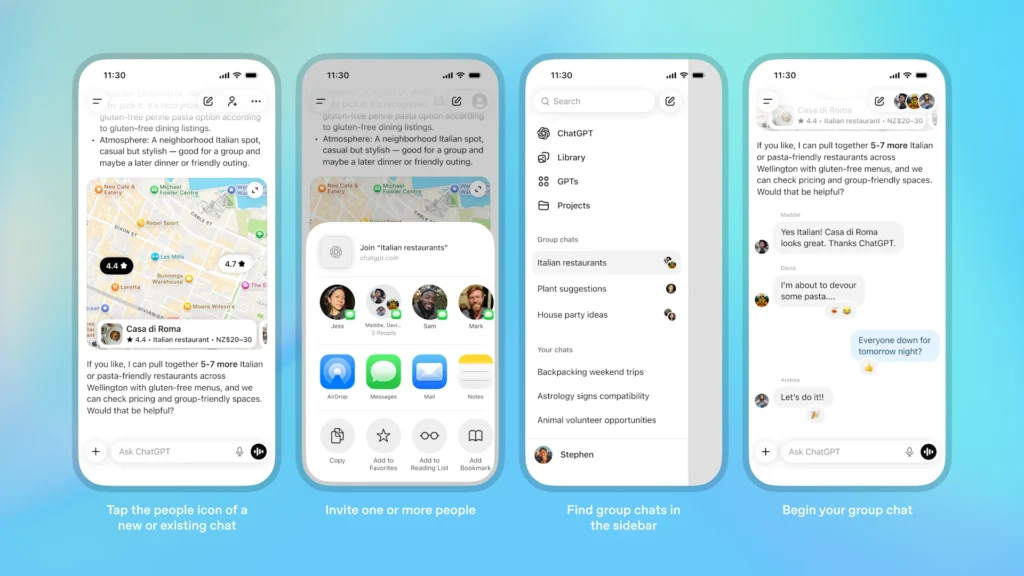OpenAI launches group chats in ChatGPT, transforming the AI chatbot into a collaborative, multi-participant environment and enabling users to work together in real time.

Group chats
Up to 20 people can join a group chat by accepting an invite, making it easier to collaborate on planning and discussions, similar to a typical ChatGPT conversation but with multiple participants.
It can compare options, settle debates, help surface options, organise information and summarise discussions. It also has functions such as search, image and file upload, image generation, and dictation.
Responses are powered by GPT-5.1 Auto, which chooses the best model to respond with based on the prompt and the models available to the user that ChatGPT is responding to, depending on their plan (Free, Go, Plus, or Pro).
ChatGPT has new social behaviours for group chats, following the flow of the conversation and deciding when to respond based on the group's context. Users can mention "ChatGPT" in a message to prompt a response.
Users can easily manage group settings by naming the group, adding or removing members, muting notifications, or setting custom instructions for ChatGPT's responses in each group chat.
Privacy and control
OpenAI emphasises that group chats are kept separate from private conversations and that personal ChatGPT memory is not used in group chats.
ChatGPT automatically reduces exposure to sensitive content for everyone in the chat for users under 18. Parents or guardians can turn group chats off entirely through parental controls(opens in a new window).
After a pilot in Japan, Korea, New Zealand and Taiwan, group chats are now generally available to all personal tiers (Free, Plus, Pro and Go). On mobile, users will need the latest iOS or Android update to join and use the feature.





